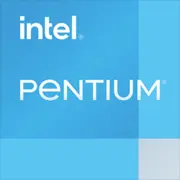Intel Pentium 1405 V2

The Intel Pentium 1405 V2 processor is a reliable and efficient option for server platforms. With a code name of Ivy Bridge-EN and a 22 nm technology, this processor offers a powerful performance for server applications. It features 2 total cores and 2 total threads, making it suitable for multitasking and handling multiple processes simultaneously.
The 6 MB L3 cache ensures that the processor has access to crucial data quickly, further improving its performance. With a TDP of 40W, it offers a good balance of power consumption and performance, making it suitable for a range of server environments.
In terms of reliability, the Intel Pentium 1405 V2 processor is a tried and tested option, known for its stability and consistent performance. It is an ideal choice for businesses and organizations looking for a cost-effective yet powerful processor for their server needs.
Overall, the Intel Pentium 1405 V2 processor is a strong option for server platforms, offering a good balance of performance, power consumption, and reliability. It is a processor that can handle the demands of server applications effectively, making it a valuable component for any server setup.
Basic
Label Name
Intel
Platform
Server
Launch Date
January 2014
Model Name
?
The Intel processor number is just one of several factors - along with processor brand, system configurations, and system-level benchmarks - to be considered when choosing the right processor for your computing needs.
Pentium 1405 V2
Code Name
Ivy Bridge-EN
CPU Specifications
Total Cores
?
Cores is a hardware term that describes the number of independent central processing units in a single computing component (die or chip).
2
Total Threads
?
Where applicable, Intel® Hyper-Threading Technology is only available on Performance-cores.
2
Basic Frequency
1400 MHz
Max Turbo Frequency
?
Max Turbo Frequency is the maximum single-core frequency at which the processor is capable of operating using Intel® Turbo Boost Technology and, if present, Intel® Turbo Boost Max Technology 3.0 and Intel® Thermal Velocity Boost. Frequency is typically measured in gigahertz (GHz), or billion cycles per second.
N/A
L1 Cache
64 KB (per core)
L2 Cache
256 KB (per core)
L3 Cache
6 MB (shared)
CPU Socket
?
The socket is the component that provides the mechanical and electrical connections between the processor and motherboard.
Intel Socket 1356
Technology
?
Lithography refers to the semiconductor technology used to manufacture an integrated circuit, and is reported in nanometer (nm), indicative of the size of features built on the semiconductor.
22 nm
TDP
40 W
PCI Express Version
?
PCI Express Revision is the supported version of the PCI Express standard. Peripheral Component Interconnect Express (or PCIe) is a high-speed serial computer expansion bus standard for attaching hardware devices to a computer. The different PCI Express versions support different data rates.
Gen 3, 24 Lanes (CPU only)
Memory Specifications
Memory Type
?
Intel® processors come in four different types: Single Channel, Dual Channel, Triple Channel, and Flex Mode. Maximum supported memory speed may be lower when populating multiple DIMMs per channel on products that support multiple memory channels.
DDR3
Memory Channels
?
The number of memory channels refers to the bandwidth operation for real world application.
Dual-channel
GPU Specifications
Integrated Graphics Model
?
An integrated GPU refers to the graphics core that is integrated into the CPU processor. Leveraging the processor's powerful computational capabilities and intelligent power efficiency management, it delivers outstanding graphics performance and a smooth application experience at a lower power consumption.
N/A
Benchmarks
Geekbench 5
Single Core
Score
300
Geekbench 5
Multi Core
Score
552
Compared to Other CPU
Geekbench 5 Single Core
Geekbench 5 Multi Core
Share in social media
Or Link To Us
<a href="https://cputronic.com/en/cpu/intel-pentium-1405-v2" target="_blank">Intel Pentium 1405 V2</a>